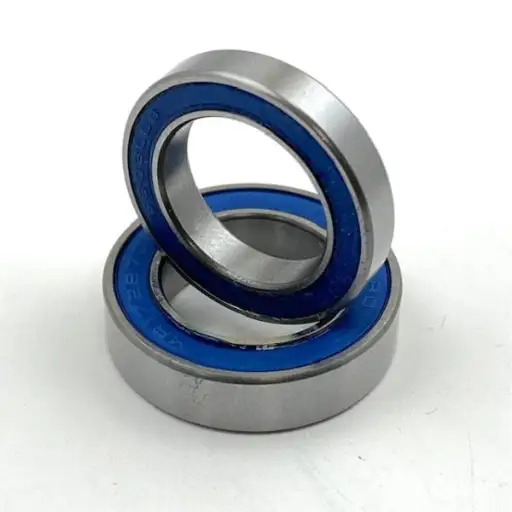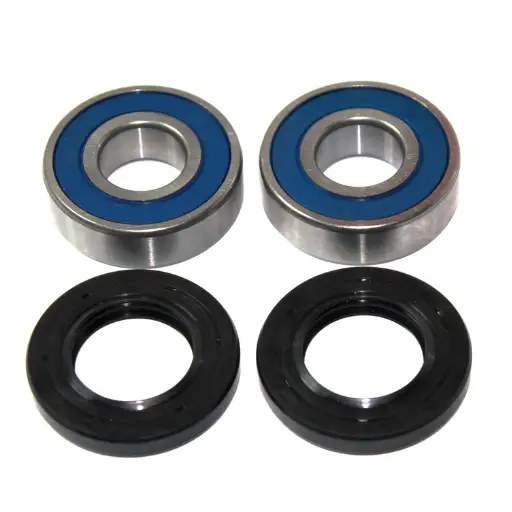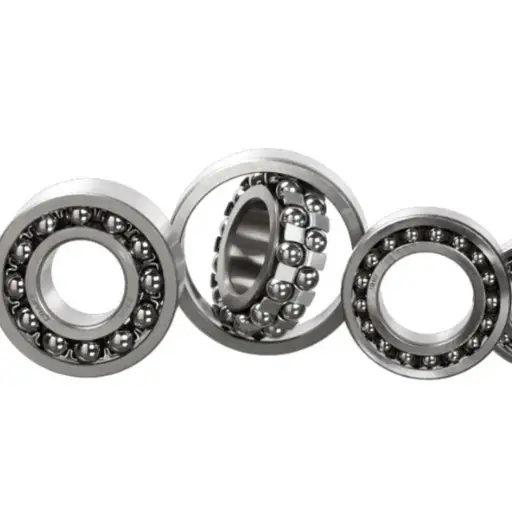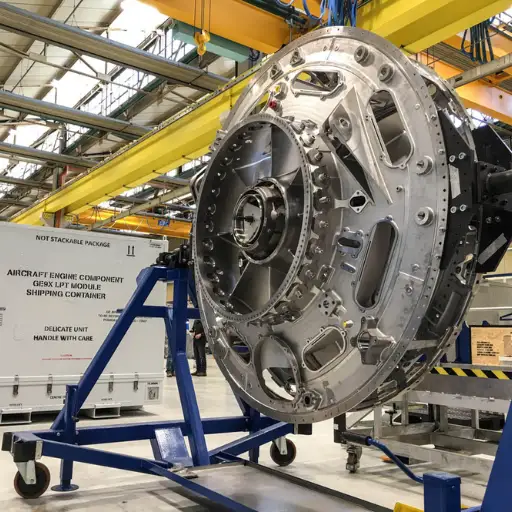In the high-stakes world of aerospace engineering, precision and reliability are of paramount importance, and aero bearings play a crucial role in ensuring the safe and efficient operation of aircraft. This blog aims to explore the integral role of bearings within the aerospace industry, detailing how these precision components contribute to everything from the smooth function of an aircraft’s moving parts to the optimization of performance under extreme conditions. By examining the latest innovations and trends in bearing technology, we’ll provide insights into how manufacturers are meeting the growing demands for durability, lightweight design, and high-performance standards. Whether you’re an industry professional or an enthusiast, this blog offers a comprehensive look into the world of aero bearings and their significance in modern aviation.
What are aerospace bearings and their applications?

Different Types of Aerospace Ball Bearings and Their Applications
An aerospace bearing application demands an aerospace ball bearing that can withstand most of those elements common in aviation and space. There are three main types: angular contact bearings, radial ball bearings, and deep groove ball bearings. Angular contact bearings are used for combined axial and radial load, and therefore often get used in aircraft engines’ shaft system. Smaller radial loads are handled with radial ball bearings and are typically used in landing gear. In contrast, deep groove ball bearings are primarily radial bearings that can also be used in an axial load, making the bearings useful in a broad range of aerospace components such as flight control systems and gearboxes. Such bearings are made from special materials of the highest quality, ensuring functionality in extreme conditions and enhancing the aerospace elements’ reliability and efficiency.
Uses of aerodynamic bearings in the aerospace industry
Aerodynamic bearings are of great significance in the aerospace industry due to high rotational speeds and low friction and wear bearing. These bearings have been most useful in turbine engines because the high temperatures and rotational speeds make the engines more efficient and reliable. They are also used in cooling systems and auxiliary power units in the aircraft, thus enabling low noise levels and lower maintenance requirements. Their design too is light which helps reduce the weight of the aerospace components thereby improving fuel consumption and range of the aircraft. They can be used to reduce the sizes and weight of aerodynamic bearings. In summary, it can be highlighted that the application of aerodynamic bearings in contemporary aircraft design enhances the efficiency and performance of aircraft while ensuring environmental sustainability.
How bearings in the aircraft industry enhance aircraft performance
The aerospace bearings assist in aircraft performance by enhancing its stability, efficiency and minimizing friction through an application of the bearings on the different systems of the aircraft. First, by reducing friction, these bearings allow for improvements in fuel consumption and decreases in heat creation, thus enabling these components to be more reliable and last longer. Secondly, they increase stability by bearing the weight created by rotating parts such as turbine shafts and gear assembly which makes movement accurate and consistent. Lastly, because of the reduced need for maintenance, aerospace bearings make it possible to achieve greater speeds rotating and therefore, more efficient engines and propulsion systems. In all cases, the bearings are engineered so that their physical properties protect them from being damaged in severely adverse operating environments, thereby enhancing performance in general.
What are the advantages and disadvantages of using aero bearings?
The useof precision bearings in aerospace contexts is associated with loud benefits
Application of precision bearings in aerospace allows achieving a number of benefits which in turn contribute to the improvement of aircraft systems. First of all, these bearings are optimized to work with very small friction and sustain large rates of rotation, thereby enhancing the economy and energy efficiency. Second of all, due to their construction, precision bearings are capable of coping up with extreme temperatures and extreme environments, which provides assurance and endurance in critical applications in aerospace. Lastly, being lightweight allows for easier boom in the aerospace components, providing better maneuverability and increased range for the aircraft. In the end, the use of precision bearings makes the aerospace systems more reliable, better operational and efficient.
Cons of standard bearings in comparison to the ones designed for aerospace applications
Compared to the aerospace specific solutions, standard bearings have several drawbacks . Firstof all , they are unableto endure the extreme temperatures and the high pressures encountered in aerospace operations, wleadingto the risks of failure or having a shorter lifespan. Also, traditional bearings exhibit higher levels of friction, which rrelatesto higher losses ,especially wwhenthe cost of fuel is a critical consideration in aerospace applications. In addition to the above, these bearings are usually heavier, waddingweight to aircraft and cnegatively affecting performance and agility Therefore, inksagsraot’s performance and reliability expectations with regards to bearings design are very demanding and most of the bearings do not meet these requirements for today’s aerospace targets.
Selecting the Sanding material for your application
Selecting the appropriate sanding bear for any particular application is a complex process wrequiring one to considermultiple factors. For two or three bearing applications these would not be critical factors but for my application considering its complexity it will. First, state any problems your application seeks to solve, for instance load limits, maximum rotation speeds, or the operations of the bearing in a dusty environment. Identify the temperature limits and whether airborne particles or humidity will be present, as these would limit the capability of the bearings used. Decide whether the application calls for ordinary or specialized bearings based upon the accuracy and efficiency that your application demands. Then after that specify the type of bearing required; ball, roller or needle, depending on the load and space limitations. Last but not least look at whether the bearing is readily available and economical. By systematically addressing all these factors, a bearing can be selected that is both ‘fit for purpose’ in terms of performance and likely life span for the application which is presented.
How do precision bearings enhance performance in the aerospace industry?

Significance of load capacity with regards to aerospace bearings
Because of the various forces the bearings are exposed to during flight, load capacity is enhanced and becomes one of the most important features in aerospace bearings. In aviation, load bears bearings when dynamical invisibility of the element is present together with the high forces acting on take-off, flight, and landing of the aircraft in addition to other kinematic maneuvers. In addition, it is ensured that implants with similar load capacity to the force with which the implant is fixed to the bone, in addition to the wear occurring, increase the service life of the bearing while helping to reduce the maintenance burden. Due to the considerable technological changes in the materials and design used nowadays in aviation engineering, load bearing characteristics are significantly higher whereas the weight characteristics remain low, which are important for improving aircraft performance.
How precision bearings minimize the level of friction within aircraft engines
Precision bearings are essential parts that prevent the excessive frictional force present in an aircraft engine which improves efficiency and performance. Their machining tolerances are made more precise while their material composition is also advanced to reduce surface roughness, thus reducing contact friction. The developments in manufacturing capabilities make it possible to hold tighter tolerances that allow for smoother rotation and reduce friction caused energy loss. This leads in the end to reduced fuel usage and emissions. Furthermore, it is not uncommon for precision bearings to be treated with special lubrication developed for the aerospace industry, which enhances durability in extremely high temperatures and pressures, decreasing friction and wear. These factors combined allow for precision bearings to assist in increasing the reliability and overall lifespan of aircraft engines.
Determinants of the Tolerance Levels of Aerospace Bearings
The tolerance levels of aerospace bearings are influenced by several factors which affect their performance and efficiency. The first factor concerns the choice of materials; the use of advanced alloys and ceramics may improve the durability and the ability of the component to withstand temperature and corrosive mediums. The second factor concerns the controllability of the manufacturing processes; as featuring closer tolerances on the turning and assembly processes lead to lesser deviations from the desired fitting dimension. The third concerns the working environment, which includes temperature, pressure, and rotating speed. Components should be designed considering those factors, with no compromise to performance. The fourth concern is the choice of lubricant and the way it is applied as it iinfluences wear and the component’s abilityto function properly under different temperatures. In combination, these factors help achieve the aerospace standards of bearings.
What are the latest developments in aerodynamic bearings?

Modern Trends in the Development of Aerospace Bearing Components
Recent years saw an increased focus in the aerospace industry in improving the whole … of aerospace bearings with the help of modern technologies. One such development is the introduction of ceramic materials as the basis for the construction of elements which has numerous advantages, including light weight, high thermal resistance, and high durability. These characteristics allow bearings to operate in large stress. Furthermore, the application of better lubrication systems has made functioning at different temperatures and pressures more efficient, reducing operational overheads and increasing the working life of bearings. However, advanced computational modeling and simulation techniques are also having a direct impact as they enable engineers to assess the performance under different conditions leading to the design of improved bearings for use in targeted aerospace applications. These innovations transform the aerospace industry by guaranteeing higher precision, reliability and efficiency of bearings in aircraft and spacecraft systems.
The role of hybrid bearings in the development of the aerospace market
The addition of hybrid bearings, which bring together the advantages of ceramic and steel materials, significantly shapes the aerospace market by providing great benefits in terms of performance. Incorporating ceramic balls within these bearings leads to weight and friction losses, improving efficiency and lowering the operational costs of aircraft. In addition, hybrid bearings have better performance characteristics, reduced wear and have higher service life, which minimizes the frequency of replacements and maintenance activities. This resistance makes them especially useful in Applications where the bearings experience high rotational speeds and high temperatures. The growing focus on sustainability and efficiency in the aerospace industry is increasing the acceptance and use of hybrid bearings, further reflecting their ability to influence tfuture aircraft Hybrid bearings are likely to increase in use as the aerospace industry always seems to be demanding more efficient and environmentally friendly technologies.
Emerging tendencies in Aerospace bearing fabrication
Aerospace bearing manufacturing industry is witnessing a tilt in few directions. One of these trends is connected with the progress in material technology, particularly the design of innovative materials, which are lighter and more enduring, so the performance gets better and there’s less aggressive wear. Adding design with the help of 3D printing is another important trend that helps create complex geometry of bearings more economically and efficiently. Another emerging trend is incorporating smart bearings that are integrated with sensors and interfaces which can measure operating parameters in real-time for condition monitoring and increase the service life of the bearings by minimising the cycle‐time required for repairs. Implementation of such eco- and resource-efficient technologies is essential in view of increasing focus on environmental issues. These technological developments will enhance the reliability, efficiency, and sustainability of aerospace systems in the future.
How do aerospace bearings withstand extreme conditions?

The strengths of aerospace bearings
When it comes to aerospace bearings, their load capacity must be scrutinized and understood in terms of the otherwise harsh conditions these components work under, for example, extreme temperatures and mechanical weight. That is why the bearings are made of heavy-duty materials, for example, higher-grade steel or high-tech ceramics. The toughening of materials increases their efficiency quite a lot. However, even more, interesting facts emerged during the studies, i.e. that they are load subjected to various tests concerning load endurance to guarantee operating safety and reliability. Important parameters such as load-bearing rating, vibration and speed tolerances are already made at the design stage of the product and controlled during the manufacturing process. This provides, with the help of the aerospace bearings, for meeting the high demands of modern aircraft for its reliability and performance during the design life.
Materials used in aerospace bearings to withstand temperature and pressure are weak
As for the materials used in aerospace bearings to cope with the hostile factors of thermodynamic pressure, its high strength steel and advanced ceramics that possess extreme hardness and resistance. These materials are selectively preferred as they can withstand a large amount of thermal and mechanical stress. Further, a few bearings are also provided with special coatings and surface treatments to improve their wear resistance properties and also lower the friction. Such combined properties make it possible that aerospace bearings work efficiently in a large temperature range and also under very high pressures which are characteristic in aerospace applications.
Extreme conditions aviating testing methods apex bearings
Extreme conditions aviating testing methods apex bearings are highly reliable and secure, as I have learned through a variety of procedures employed in the testing of aerospace bearings. The evaluation routine mostly starts with specialized vibration analysis that is expected to pinpoint any faults. The high temperature testing chambers imitate the varying temperatures that the bearings could undergo during flight so that their behavior under thermal stress can be evaluated. There are other tests quite necessary as well, pressure tests for instance, wherein bearings are intentionally loaded with the strength and durability parameters that exceed their standard operational loads. Such tests are required to ascertain that the bearings will operate well even under the extreme conditions prevalent in the aerospace industry.
Reference sources
- Smith Aircraft Bearings: This document provides an introduction to aerospace bearings designed to meet industry standards and military specifications. Read more here.
- Schatz Bearing: This source discusses aerospace bearings that are AS9100 registered and manufactured to U.S. government standards, ensuring high quality and reliability. Explore further here.
- Research on Reliability and Efficiency: This research paper explores the evolution of reliability and efficiency in aerospace bearing systems, providing insights into their performance and development. Access the paper here.
These sources should offer valuable insights into the standards, reliability, and performance of aerospace bearings.
Frequently Asked Questions (FAQs)

Q: What industries applying aero bearings can be identified?
A: Aerometer bearings are well suited for aerospace and defense industries, technical machinery where drive shafts with minimum rolling friction are needed. They are also used in’, for example, where the maintenance requirements are low.
Q: Which factors should I consider when choosing an air bearing?
A: Load capacity, speed requirements and the environment where the bearing is operating – these are the main parameters that should be taken into account. IContacting a distributor or manufacturerwould not be a bad idea tince they would offer guidance specific to your inquiry.
Q: In which aspects seals of aero bearings are relevant?
A: Aero bearing seals serve an important purpose – ensuring the thin air film is intact, and external contaminants do not infiltrate the bearing. Proper wear of seals will minimize performance variability and wear of the bearing mechanism during operation.
Q: To what level does the bearing’s cross-section affect its performance?
A: The cross section of an aero bearing has a huge impact on stability, stiffness, clearance, and efficiency. If the cross section is implemented correctly, the bearing will also lose the ability to handle inconsistencies in load.
Q: How do I maintain aero bearings so that they do not have a short lifespan?
A: In maintaining aero bearings, the basic operational parameters such as the pressure of air supplied should be maintained. It would also be advisable to check for any signs of wear and tear as well as the performance of seals on a regular basis to avoid possible deficiencies in the future.
Q: Do aero bearings have any disadvantages when using them?
A: The use of aero bearings, while acceptable in many situations, is not recommended for applications requiring large radial loads or when the thin film of air is likely to be affected by external forces. Other than that, it is good to comprehend the limitations of the application before going for aero bearings.






